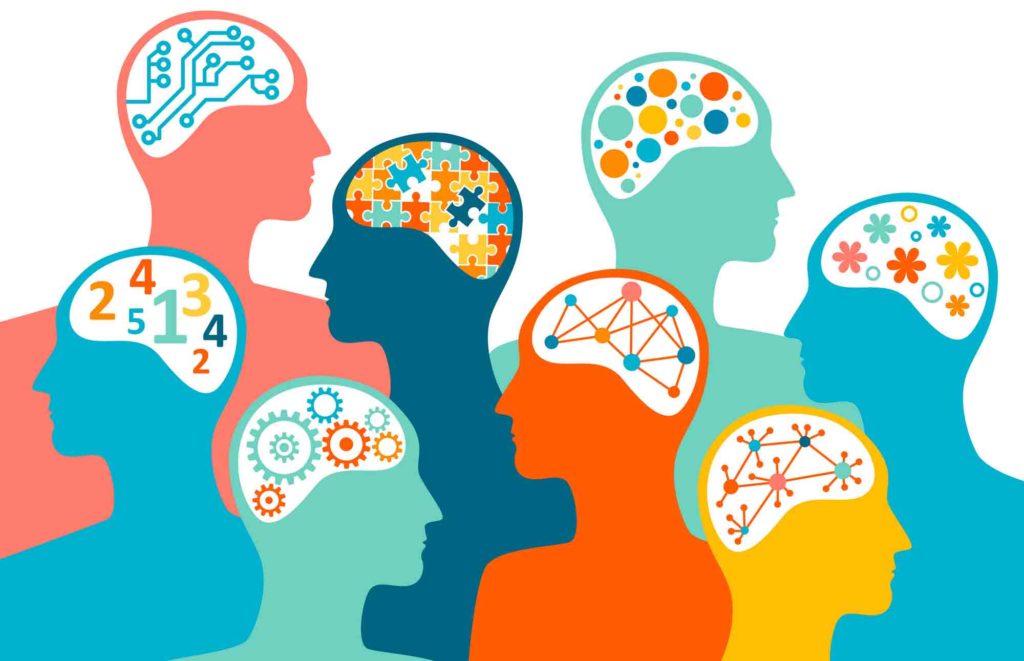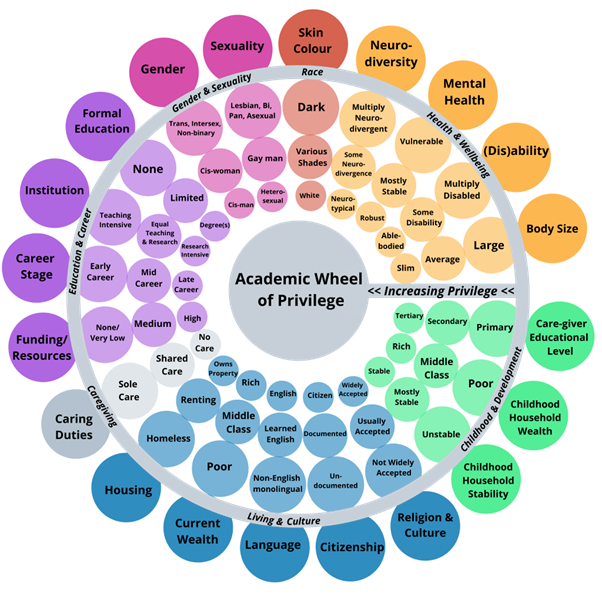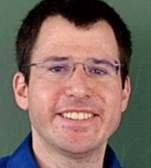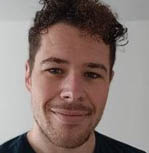Featured
Navigating Academia as Neurodivergent Researchers: Promoting Neurodiversity Within Open Scholarship
Supporting the messages of both open scholarship and neurodiversity will ensure that the goals of diversity, equity, and inclusion reach across populations and explicitly include neurodivergent people.

More than 80% of the world’s population lives in countries other than the United States, Canada, and Europe, which dominate psychological science nonetheless. The Global Spotlight series is a small step toward closing that gap. Authors across the globe—including in regions that have long been underrepresented in the research community—share unique and personal perspectives on the issues affecting their work and careers. In providing these on-the-ground narratives, we hope to illuminate concrete challenges and opportunities alike involving this truly global science.
What is neurodiversity? • Neurodiversity representation in psychology • Neurodiversity in academia: Challenges and barriers • Supporting neurodiversity in academia: The need to thrive, as opposed to survive • Conclusions
For decades, the majority of research in psychological sciences has emerged from Western, educated, industrialized, rich, and democratic (WEIRD) countries, often using small and unrepresentative samples such as undergraduate students (IJzerman et al., 2021). Certain groups are still systematically excluded, but issues around race, sex, gender, socioeconomic status, and culture are now being discussed more openly, promising to move psychological sciences away from the dominance of WEIRD countries. In addition, psychological scientists increasingly are aiming for sampling diversity (Elsherif et al., 2022; Forbes et al., 2021; Forscher et al., 2022), avoiding obtaining results that may not generalize to larger populations, embracing participatory research, and improving the quality and openness of research in general (e.g., Henrich et al., 2010; Nosek et al., 2022). Change is happening, albeit slowly. The adoption of open scholarship practices has also helped accelerate this shift, and there is already discussion about how these practices can support individuals from marginalized groups, such as scholars who are assigned female at birth, racialized Black scholars, and/or transgender scholars (Ledgerwood et al., 2022; Pownall & Rogers, 2021; Roberson, 2020).
Read other articles from the Global Spotlight series: “P is for Problem, Publish, and Psychology: Multilingual Scholars and the Challenges of Publishing in English,” and “Psychology in the Arab Region: A Critical Perspective on Challenges and Ways Forward.”
However, despite significant strides in making psychology more open and accessible to all, one group seems to be left behind: Where are the neurodivergent scholars and research participants?
Open scholarship vs. open science
We use the phrase “open scholarship” instead of open science. For many, these are synonymous, but we think open scholarship is more of a redefinition and reframing (Azevedo et al., 2022). Open scholarship is more inclusive because it extends open science to all knowledge systems, including those not traditionally identified as science. Open scholarship also includes mentoring, teaching, and producing educational materials (Parsons et al., 2022). In particular, open scholarship makes explicit the importance of accessibility, diversity, equity, and inclusion as necessary conditions for improving the way we practice science. Open scholarship then becomes a tool to develop strategies for addressing structural disadvantages faced by minoritized groups and a way of looking at open science from a more humanistic view (Azevedo et al., 2019).
What is neurodiversity?
As Dwyer (2022) emphasized, defining neurodiversity is not easy; diagnoses are often considered against a narrow set of diagnostic criteria focused on external presentation and open to interpretation (e.g., within the DSM-5, dyspraxia/developmental coordination disorder/condition diagnosis is typically focused on motor-skill control but fails to acknowledge the sensory processing and speech difficulties that are often reported; Dyspraxia Foundation, n.d.; Ne’eman & Pellicano, 2022). Here we define neurodiversity as a nonpathological variation in the human brain that influences movement, sociability, learning, and/or attention, among other mental functions (Walker, 2021). In comparison, individuals who form part of the neurological “majority” can be described as neurotypical. Individuals are considered neurodivergent when their neurology differs from this majority and may include those diagnosed with autism/autism spectrum disorder/condition (ASD/ASC), attention-deficit/hyperactivity disorder/condition (ADHD/ADHC), dyslexia, or dyspraxia. But neurodiversity does not depend on a diagnosis and takes into account the nature of human neurobiology as variable and diverse (e.g., Kapp et al., 2013; Elsherif et al., 2022; Ne’eman & Pellicano, 2022; Walker, 2021).
Related content: Psychological Science Around the World (series)
The traditional medical model of disability focuses on individuals’ deficits and functional limitations. It attempts to normalize individuals or eradicate these deficits (Dwyer, 2022), yet efforts by autistic people to camouflage or mask to appear neurotypical are associated with anxiety, stress, and reduced well-being (Cage & Troxell-Whitman, 2019). Within the last few decades, there has been some progress (albeit slow) toward accepting neurodivergent people (Robertson & Ne’eman, 2008). To counter the medical model, the neurodiversity movement argues that neurodiverse conditions should not be prevented, normalized, or cured; instead, it emphasizes the need for accommodation, support, and amelioration of traits that threaten the individual’s quality of life (Kapp et al., 2013).
The neurodiversity movement also challenges the notion that all humans must conform to the same expectations to thrive in a societally prescribed and standardized way. Instead, it argues that being different from the majority is not a deficit. Understandably, because of the negative connotations and perceptions of the concept of disability, individuals are uncomfortable being defined by it (Brown & Leigh, 2018). In our largely ableist society, the ideology of meritocracy helps sustain beliefs that some people are impaired or defective, and thereby typicality is viewed as more than normal, better, or even gifted (D’Souza, 2016). More constructively, the neurodiversity movement sees human diversity as the “sum of unique biological and cultural variation within our species” (Mirazón Lahr, 2016, p. 2), acknowledging that humanness must encompass both strengths and weaknesses. Embracing diversity, equity, and inclusion requires accepting individual differences and nuances, involving critical and constructive dialogues about how diversity can inform and enhance notions of success that can be applied to all. These considerations are sine qua non to support individuals’ needs and to challenge the questionable standards of ableism.
Use of identity-first language
Throughout this article, we use identity-first language (e.g., dyslexic person), reflecting the anecdotal general preference of Framework of Open Reproducible Research and Training’s (FORRT) neurodiverse community (see sidebar, “FORRT and the neurodiversity team”) and in line with recommendations regarding bias-free language to honor the disability language choices made by groups of disabled individuals (see Section 5.4, American Psychological Association, 2020). We recognize that linguistic preferences will vary among neurodivergent people and neurodiverse conditions, as well as in the same individual over time. In the meantime, research into linguistic prescription remains understudied (but see Bottema-Beutel et al., 2021; Keating et al., 2022; Taboas et al., 2022).
Neurodiversity representation in psychology
Within psychology, much of the research focuses on investigating the cognition or behavior of “normative” populations whose characteristics fit within Pearson’s bell-shaped curve in the law of averages (Harden, 2021, pp. 16–20; Kirby, 2022; Raper, 2019), resulting in individuals possessing “atypical” characteristics often being screened out. For example, studies investigating social cognition may exclude autistic individuals, whereas studies investigating language processing may exclude dyslexic and stuttering individuals. Such practices lead to inferences about the population distribution that are based on oversampling of racialized White, educated, able-bodied, and neurotypical individuals. Unfortunately, this has contributed to ideas of typicality, rationality, and optimal behavior centered on the norms of a global minority (Whitaker & Guest, 2020). Historically excluded and undersampled participants are often considered minorities reserved for specialty journals (IJzerman et al., 2021). And on the rare occasions these populations are studied, researchers often carry the burden of justifying why and how their samples generalize to all humans.
Collectively, this has led to theoretical and practical contributions of psychological science that, even if implicitly, (a) consider White, educated, able-bodied, and neurotypical individuals as archetypal of human psychology, as if their identities were inconsequential to their thoughts, feelings, and behaviors (Roberts & Mortenson, 2022); and (b) emphasize deficits and perpetuate othering—that is, perceiving certain groups as inferior to the researchers’ conception of the norm (Gernsbacher, 2010). This emphasis, in turn, stifles knowledge about diverse human behavior and potentially causes harm to minoritized populations (e.g., people from low- and middle-income countries, people of color, and neurodivergent or gender-diverse individuals in the general population). One example of such harm is the use of standardized assessments that are validated on samples that do not represent diverse populations and whose results, therefore, can misrepresent people from neurodivergent (Cascella, 2009) or non-WEIRD backgrounds (Pearce & Williams, 2013) and lead to inappropriate interventions (Fletcher & Navarrete, 2003). This lack of representation—and lack of widespread challenge of the White = neutral framework in psychological science—can also harm psychological science itself (see Dupree & Kraus, 2021; Forscher et al., 2021; Roberts & Mortenson, 2022).
Related content: One of Us: Combating Stigma Against People with Intellectual and Developmental Disabilities
Neurodiversity in academia: Challenges and barriers
The issue of neurodiverse representation is not just with research samples, but with the whole academic system. Academia remains romanticized as a career to strive for (Lovin, 2018, cited in Brown & Leigh, 2020; Sautier, 2021); academics are pressured to produce high-quality research that attracts funding and contributes to the collective prestige of their field, while simultaneously performing high-quality teaching, mentoring/supervision, and administrative work. Such a system focuses on productivity and effectiveness, often at the expense of work–life balance, and working more than the contracted hours is seen as standard (Lloyd, 2015). As a result, burnout is common for anyone climbing the academic success ladder (Fernández-Suárez et al., 2021; Rocha et al., 2020; Sabagh et al., 2018), but particularly for neurodivergent academics, as the ladder is designed for survival-of-the-most-abled. Even as universities attempt to foster a positive work culture by promoting diversity, equity, and inclusion (DEI) measures, gaps between theory and practice lead to mixed messaging of DEI awareness and acceptance within institutions, with research indicating that concerns regarding disability disclosure remain. For instance, academics may worry about how their disability may be defined or how others may perceive their disability’s influence on their work output (Mellifont et al., 2021). As disclosure is a personal choice and rarely has positive career outcomes, those with disabilities face a difficult question: “Should I disclose?”
FORRT and the neurodiversity team
FORRT—the Framework for Open and Reproducible Research Training (forrt.org)—is an interdisciplinary and international community of 500+ early career scholars aiming to integrate open scholarship principles into higher education and advance research transparency, reproducibility, rigor, and ethics through pedagogical reform. FORRT offers in its e-learning platform several educational resources (e.g., Pownall et al., 2021; Parsons et al., 2022) that use diverse strategies to mitigate time constraints for scholars implementing open and principled education in their workflow, and advocates for diversity, equity, inclusion, accessibility, and social justice in open scholarship.
FORRT’s neurodiversity team brings together the heads, hands, and hearts of people bridging open scholarship and neurodiversity to create change in their communities toward empowering marginalized scholars. Efforts involve (1) creating a database of research conducted by neurodivergent researchers for undergraduate and postgraduate syllabi; (2) a position statement on how open scholarship can benefit from neurodiversity (see Elsherif et al., 2022); (3) developing materials on how participatory research, open scholarship, and neurodiversity can benefit psychological science, leading to a more credible and rigorous science of human behavior and cognition; and (4) the development of an Academic Wheel of Privilege (WoP), which provides an alternative method to assigning authorship and credit in scientific papers (as opposed to the classic “merit” system, which, in our view, perpetuates inequities in academia). We believe the WoP can serve as a starting tool to generate deeper discussions on the concepts of privilege, power imbalance, implicit bias, positionality, and intersectionality. Furthermore, we believe the WoP helps raise awareness of the hidden curriculums and systems—conferring power and dominance to a minority of researchers—as a means to galvanize change in norms and culture toward a more equitable academia.

Supporting neurodiversity in academia: The need to thrive, as opposed to survive
So how can we support neurodiversity in academia? We make several recommendations to help make the academic environment more accessible, equitable, and inclusive for neurodivergent scholars.
One recommendation is to implement universal design (UD) principles that allow educational institutions to create inclusive spaces for scholars and students to thrive. Examples include multiple ways of engaging in lectures (e.g., lecture capture or “watch party” lectures; Kuepper-Tetzel & Nordmann, 2021), meetings in online spaces, and alternative assessments where required. When well implemented, UD reduces the burden of scholars to disclose and/or seek accommodations. However, perceptions of what neurodivergent individuals require to thrive are all too often influenced by the medical model, which is informed by discriminatory practices (Dwyer, 2022). Instead of prescribing UD accommodations that neurotypical individuals assume could help neurodivergent individuals, we advocate that university administrators, colleagues, and funders develop policy for academic support in collaboration with neurodivergent stakeholders, asking how they want to be helped and then accommodating appropriately. This is necessary to minimize accessibility barriers by institutionalizing efforts to educate and provide training on the concepts of privilege, power imbalances, implicit biases, positionality statements, and intersectionality. It is far too common—and an unjust burden of emotional labor—to rely on individuals to educate and challenge the systems that oppress them (i.e., minority/cultural tax; Gewin, 2020). Sharing this burden is not only a sign of allyship but ensures that minoritized individuals’ unique lived experiences, values, and challenges are better understood by their community.
We also recommend collaborating with neurodivergent academics to adopt intersectional and participatory approaches to research, comparable to what Silan et al. (2021) noted regarding indigenous psychology. Stakeholders should proactively address potential power imbalances between neurodivergent and neurotypical academics. It bears saying that too few in academia readily recognize their heightened responsibility to protect minoritized groups from norms, situations, and environments that can potentially further their subjugation. To not do so is definitional of tokenization—and risks bordering exploitation of minoritized individuals for institutional gain.
Finally, greater adoption of open scholarship practices would represent a step in the right direction. Team science practices and large-scale collaborations that can involve tens or hundreds of authors from different institutions to work collaboratively and share expertise (e.g., Many Babies: Frank et al., 2017; Psychological Science Accelerator: Moshontz et al., 2018; FORRT: Pownall et al., 2022) help support a shared workload, flexibility, and implementation of accessibility strategies. The adoption of these approaches to research would allow neurodivergent researchers to contribute to projects more aligned with their strengths while mitigating any of the individuals’ challenges connected to their disability. For example, for a person with ADHD working in a Big Team provides accountability that gives them the sense of urgency they often need to stay engaged in a project. Hawker (2017) suggested that neurodivergent people can bring intense rigor to the design and pre-submission review processes. Large teams must also remain mindful of not recreating existing social-power imbalances. This can be achieved by appointing (and incentivizing the appointment of) neurodivergent members in leadership positions, as exemplified in Elsherif et al. (2022).
More broadly, moving away from the publish-or-perish culture and improving scientific practices by aiming for slow science—fewer but higher-quality publications—would not only benefit neurodivergent researchers but also alleviate the burden on everyone involved in the research process (Lau, 2019; Rosen, 2011). Adopting the Contributor Roles Taxonomy (CRediT; https://credit.niso.org; see also this Observer article) to clearly outline each author’s specific contribution to a piece of research alongside adopting the WoP for authorship order could also improve equity in academia, enabling the voices of neurodivergent individuals to be heard, recognized, and, most importantly, respected. These changes would benefit not only neurodivergent individuals but also align with many institutional DEI missions.
Related content: Across the Spectrum
Conclusions
Elsherif and colleagues (2022) highlight important points for future research and for fostering clinical and public understanding of what disability encapsulates (Elsherif et al., 2022). Researchers, educators, and the general public need to ask the following questions: How can academia, research, and the public best support neurodivergent individuals through education, outreach, and various health, well-being, and welfare services? More specifically, how can institutional systems address the challenges, barriers, and strengths of neurodivergent individuals in the wider social milieu?
In contrast to medical models that focus on individuals’ limitations, this change of perspective can help embrace a more nuanced understanding of disability and ability in the broader psychosocial and educational ecology. This requires a shift in thinking away from curing or concealing an individual’s neurodivergence to respecting the array of strengths and weaknesses. Valuing the strengths of neurodivergent individuals, together with suitable accommodations, does not just benefit those individuals but also all those within that system.
The message of open scholarship is to change the environment to make knowledge more open and accessible to others. The message of neurodiversity is to support and protect the rights of disabled individuals so that their lived experiences are equally considered in day-to-day life. By supporting both, we can ensure that the goals of diversity, equity, and inclusion reach across populations and explicitly include neurodivergent people. Yet there remains a need for a constructive and collaborative dialogue with minoritized populations through participatory action work (Elsherif et al., 2022). This process may have its challenges but, in addition to being worthwhile, it aligns and synergizes with many of the proposed changes toward more inclusivity and diversity within the academic culture—and society at large. As Grinker (2010, p.173) wrote, “our strengths and deficits will shape, not deny, our humanity.” At their core, the neurodiversity movement and open scholarship have a similar ethos: accessibility of knowledge, equality, and inclusion. We believe that embracing neurodiversity and open scholarship within psychological science and beyond would not only advance our science but also equitably support a variety of underrepresented populations, ensuring science is genuinely open and accessible for all.
Feedback on this article? Email apsobserver@psychologicalscience.org or login to comment. Interested in writing for us? Read our contributor guidelines.
Alphin Jr., H. C., Lavine, J., & Chan, R. Y. (Eds.). (2017). Disability and equity in higher education accessibility. IGI Global. https://doi.org/10.4018/978-1-5225-2665-0
American Psychological Association (2020). Publication manual of the American Psychological Association (7th ed.).
Auelua-Toomey, S. L., & Roberts, S. O. (2022). The effects of editorial-board diversity on race scholars and their scholarship: A field experiment. Perspectives on Psychological Science. Advance online publication. https://doi.org/10.1177/1745691621107285
Azevedo, F., Liu, M., Pennington, C. R., Pownall, M., Evans, T. R., Parsons, S., Elsherif, M. M., Micheli, L., Westwood, S., & FORRT. (2021). Towards a culture of open scholarship: The role of pedagogical communities. BMC Research Notes, 15(1), 1–5. https://doi.org/10.1186/s13104-022-05944-1
Azevedo, F., Parsons, S., Micheli, L., Strand, J. F., Rinke, E., Guay, S., Elsherif, M., Quinn, K. A, Wagge. J., Steltenpohl, C. N., Kalandadze, T., Vasilev, M. R., Oliveira, C. M., Aczel, B., Miranda, J. F., Baker, B. J., Galang, C. M., Pennington, C. P., Marques, T., … FORRT. (2019, December 13). Introducing a framework for open and reproducible research training (FORRT). https://doi.org/10.31219/osf.io/bnh7p
Azevedo, F., Pavlovic, T., & Rêgo, G. G., Ay, F. C., Gjoneska, B., Etienne, T., Ross, R. M., Schonegger, P., Riano-Moreno J. C., Cichocka, A., Capraro, V., Cian, L., Longoni, C., Chan, H. F., Van Bavel, J. J., Sjåstad, H., Nezlek, J. B., Alfano, M., Gelfand, M. J., … Sampaio, W. M. (2022, May 18). Social and moral psychology of COVID-19 across 69 countries. PsyArXiv. https://doi.org/10.31234/osf.io/a3562
Bottema-Beutel, K., Kapp, S. K., Lester, J. N., Sasson, N. J., & Hand, B. N. (2021). Avoiding ableist language: Suggestions for autism researchers. Autism in Adulthood, 3(1), 18–29.
Brown, N., & Leigh, J. (2018). Ableism in academia: Where are the disabled and ill academics? Disability & Society, 33(6), 985–989. https://doi.org/10.1080/09687599.2018.1455627
Cage, E., & Troxell-Whitman, Z. (2019). Understanding the reasons, contexts and costs of camouflaging for autistic adults. Journal of Autism and Developmental Disorders, 49(5), 1899–1911. https://doi.org/10.1007/s10803-018-03878-x
Cascella, P. W. (2009). Standardised speech-language tests and students with intellectual disability: A review of normative data. Journal of Intellectual & Developmental Disability, 31(2), 120–124. https://doi.org/10.1080/13668250600681503
CRediT. (n.d.). Contributor roles taxonomy. Retrieved October 19, 2022, from https://credit.niso.org
Delanty, G. (2001). The university in the knowledge society. Organization, 8(2), 149–153. https://doi.org/10.1177/1350508401082002
D’Souza, R. (2016). Ableism and the ideology of merit. For the Learning of Mathematics, 36(3), 21–23.
Dwyer, P. (2022). The neurodiversity approach(es): What are they and what do they mean for researchers? Human Development, 66, 73–92. https://doi.org/10.1159/000523723
Dyspraxia Foundation (n.d.). Dyspraxia at a glance. https://dyspraxiafoundation.org.uk/what_is_dyspraxia/dyspraxia-at-a-glance/
Elsherif, M. M., Middleton, S. L., Phan, J. M., Azevedo, F., Iley, B. J., Grose-Hodge, M., Tyler, S., Kapp, S. K., Gourdon-Kanhukamwe, A., Grafton-Clarke, D., Yeung, S. K., Shaw, J. J., Hartmann, H., & Dokovova, M. (2022). Bridging neurodiversity and open scholarship: How shared values can guide best practices for research integrity, social justice, and principled education. MetaArXiv. https://doi.org/10.31222/osf.io/k7a9p
Fernández-Suárez, I., García-González, M. A., Torrano, F., & García-González, G. (2021). Study of the prevalence of burnout in university professors in the period 2005–2020. Education Research International, Article 7810659. https://doi.org/10.1155/2021/7810659
Fletcher, T. V., & Navarrete, L. A. (2003). Learning disabilities or difference: A critical look at issues associated with the misidentification and placement of hispanic students in special education programs. Rural Special Education Quarterly, 22(4), 37–46. https://doi.org/10.1177/875687050302200406
Forbes, S. H., Aneja, P., & Guest, O. (2021). The myth of normative development. PsyArXiv. https://doi.org/10.31234/osf.io/ajynp
Forscher, P. S., Basnight-Brown, D. M., Dutra, N., Adetula, A., Silan, M., & IJzerman, H. (2021). Psychological science needs the entire globe, part 3. APS Observer, 35 https://www.psychologicalscience.org/observer/entire-globe-part-3
Forscher, P. S., Wagenmakers, E.-J., Coles, N. A., Silan, M. A., Dutra, N., Basnight-Brown, D., & IJzerman, H. (2022). The benefits, barriers, and risks of big-team science. Perspectives on Psychological Science, Article 174569162210829. https://doi.org/10.1177/17456916221082970
Frank, M. C., Bergelson, E., Bergmann, C., Cristia, A., Floccia, C., Gervain, J., Hamlin, J. K., Hannon, E. E., Kline, M., Levelt, C., Lew-Williams, C., Nazzi, T., Panneton, R., Rabagliati, H., Soderstrom, M., Sullivan, J., Waxman, S., & Yurovsky, D. (2017). A collaborative approach to infant research: promoting reproducibility, best practices, and theory-building. Infancy, 22(4), 421–435. https://doi.org/10.1111/infa.12182
Gernsbacher, M. A. (2010). Stigma from psychological science: Group differences, not deficits—introduction to stigma. Perspectives on Psychological Science, 5(6), 687. https://doi.org/10.1177/1745691610388767
Grinker, R.R. (2010), Commentary: On being autistic, and social. Ethos, 38, 172–178. https://doi.org/10.1111/j.1548-1352.2010.01087.x
Harden, K. P. (2021). The genetic lottery: why DNA matters for social equality. Princeton University Press.
Henrich, J., Heine, S. J., & Norenzayan, A. (2010). Beyond WEIRD: Towards a broad-based behavioral science. Behavioral and Brain Sciences, 33(2–3), 111–135. https://doi.org/10.1017/S0140525X10000725
IJzerman, H., Dutra, N., Silan, M., Adetula, A., Brown, D. M. B., & Forscher, P. (2021). Psychological science needs the entire globe, part 1. APS Observer, 34. https://www.psychologicalscience.org/observer/global-psych-science
Kapp, S. K., Gillespie-Lynch, K., Sherman, L. E., & Hutman, T. (2013). Deficit, difference, or both? Autism and neurodiversity. Developmental Psychology, 49(1), 59–71. https://doi.org/10.1037/a0028353
Kapp, S. K. (2020). Introduction. In Autistic community and the neurodiversity movement: Stories from the frontline (pp. 1–19). Springer Nature.
Keating, C. T., Hickman, L., Leung, J., Monk, R., Montgomery, A., Heath, H., & Sowden, S. (2022, May 10). Autism-related language preferences across the globe: A mixed methods investigation. PsyArxiv. https://doi.org/10.31234/osf.io/859×3
Kuepper-Tetzel, C., & Nordmann, E. (2021). Watch party lectures: synchronous delivery of asynchronous material. Journal of Learning Development in Higher Education, (22). https://doi.org/10.47408/jldhe.vi22.696
Kirby, A. (2022, March 1). Neurodiversity—not a Norma or Normman in sight? LinkedIn. https://www.linkedin.com/pulse/neurodiversity-norma-normman-sight-prof-amanda-kirby
Lau, T. C. W. (2019). Slowness, disability, and academic productivity: The need to rethink academic culture. In B. Whitburn & C. McMaster (Eds.) Disability and the university: A disabled students’ manifesto (pp. 11–19). Peter Lang.
Ledgerwood, A., Hudson, S. T. J., Lewis, N. A., Maddox, K. B., Pickett, C. L., Remedios, J. D., Cheryan, S., Diekman, A. B., Dutra, N. B., Goh, J. X., Goodwin, S. A., Munakata, Y., Navarro, D. J., Onyeador, I. N., Srivastava, S., & Wilkins, C. L. (2022). The pandemic as a portal: Reimagining psychological science as truly open and inclusive. Perspectives on Psychological Science, 17(4), 937–959. https://doi.org/10.1177/17456916211036654
Lloyd, M.S. (2015). The ethics and politics of vulnerable bodies. In Lloyd, M.S. (Ed.) Butler and Ethics (pp. 167–192). Edinburgh University Press.
Mellifont, D. (2021). Ableist ivory towers: A narrative review informing about the lived experiences of neurodivergent staff in contemporary higher education. Disability & Society. https://doi.org/10.1080/09687599.2021.1965547
Mirazón Lahr, M. (2016). The shaping of human diversity: filters, boundaries and transitions. Philosophical Transactions of the Royal Society B: Biological Sciences, 371, Article 20150241. http://doi.org/10.1098/rstb.2015.0241
Moshontz, H., Campbell, L., Ebersole, C. R., IJzerman, H., Urry, H. L., Forscher, P. S., Grahe, J. E., McCarthy, R. J., Musser, E. D., Antfolk, J., Castille, C. M., Evans, T. R., Fiedler, S., Flake, J. K., Forero, D. A., Janssen, S. M. J., Keene, J. R., Protzko, J., Aczel, B., & Álvarez Solas, S. (2018). The Psychological Science Accelerator: Advancing psychology through a distributed collaborative network. Advances in Methods and Practices in Psychological Science, 1(4), 501–515. https://doi.org/10.1177/2515245918797607
Morley, L., & Walsh, V. (1995). Feminist Academics: Creative Agents for Change. Taylor & Francis.
Ne’eman, A., & Pellicano, L. (2022). Neurodiversity as politics. Human Development, 66, 149–157. https://doi.org/10.1159/000524277
Nosek, B. A., Hardwicke, T. E., Moshontz, H., Allard, A., Corker, K. S., Dreber, A., Fidler, F., Hilgard, J., Kline Struhl, M., Nuijten, M. B., Rohrer, J. M., Romero, F., Scheel, A. M., Scherer, L. D., Schönbrodt, F. D., & Vazire, S. (2022). Replicability, robustness, and reproducibility in psychological science. Annual Review of Psychology, 73(1), 719–748. https://doi.org/10.1146/annurev-psych-020821-114157
Parsons, S., Azevedo, F., Elsherif, M. M., Guay, S., Shahim, O. N., Govaart, G. H., Norris, E., O’Mahony, A., Parker, A. J., Todorovic, A., Pennington, C. R., Garcia-Pelegrin, E., Lazić, A., Robertson, O. M., Middleton, S. L., Valentini, B., McCuaig, J., Baker, B. J., Collins, E., … & Aczel, B. (2022). A community-sourced glossary of open scholarship terms. Nature Human Behaviour, 6(3), 312–318. https://doi.org/10.1038/s41562-021-01269-4
Pearce, W. M., & Williams, C. (2013). The cultural appropriateness and diagnostic usefulness of standardized language assessments for Indigenous Australian children. International Journal of Speech-Language Pathology, 15(4), 429–440. https://doi.org/10.3109/17549507.2012.762043
Pownall, M., Azevedo, F., Aldoh, A., Elsherif, M., Vasilev, M., Pennington, C. R., Robertson, O., Tromp, M. V., Liu, M., Makel, M. C., Tonge, N., Moreau, D., Horry, R., Shaw, J., Tzavella, L., McGarrigle, R., Talbot, C., Parsons, S., & FORRT. (2021). Embedding open and reproducible science into teaching: A bank of lesson plans and resources. Scholarship of Teaching and Learning in Psychology. Advance online publication. https://doi.org/10.1037/stl0000307
Pownall, M., Azevedo, F., König, L. M., Slack, H. R., Evans, T. R., Flack, Z., Grinschgl, S., Elsherif, M. M., Gilligan-Lee, K. A., Oliveira, C. M., Gjoneska, B., Kanadadze, T., Button, K. S., Ashcroft-Jones, S., Terry, J., Albayrak-Aydemir, N., Dechterenko, F., Alzahawi, S., Baker, B. J., Pittelkow, M.-M., …FORRT.(2022). The impact of open and reproducible scholarship on students’ scientific literacy, engagement, and attitudes towards science: A review and synthesis of the evidence. MetaArXiv. https://doi.org/10.31222/osf.io/9e526
Pownall, M., & Rogers, W. S. (2021). A Feminist Companion to Social Psychology. McGraw-Hill Education.
Raper, S. (2019). Turning points. Pearson and the parameter. Significance, 16(3), 22–25. https://doi.org/10.1111/j.1740-9713.2019.01276.x
Roberts, S. O., & Mortenson, E. (2022). Challenging the White = neutral framework in psychology. Perspectives on Psychological Science. https://doi.org/10.1177/17456916221077117
Roberson, M. L. (2020). On supporting early-career Black scholars. Nature Human Behaviour, 4(8), 773. https://doi.org/10.1038/s41562-020-0926-6
Robertson, S. M., & Ne’eman, A. D. (2008). Autistic acceptance, the college campus, and technology: Growth of neurodiversity in society and academia. Disability Studies Quarterly, 28(4). https://doi.org/10.18061/dsq.v28i4.146
Rocha, F. L. R., Jesus, L. C. D., Marziale, M. H. P., Henriques, S. H., Marôco, J., & Campos, J. A. D. B. (2020). Burnout syndrome in university professors and academic staff members: Psychometric properties of the Copenhagen Burnout Inventory—Brazilian version. Psicologia: Reflexão e Crítica, 33. https://doi.org/10.1186/s41155-020-00151-y
Rosen, R. J. (2011, July 29). The Slow-Science Manifesto: “We Don’t Twitter.” The Atlantic. https://www.theatlantic.com/technology/archive/2011/07/the-slow-science-manifesto-we-dont-twitter/242770/
Sabagh, Z., Hall, N. C., & Saroyan, A. (2018). Antecedents, correlates and consequences of faculty burnout. Educational Research, 60(2), 131–156. https://doi.org/10.1080/00131881.2018.1461573
Silan, M., Adetula, A., Basnight-Brown, D. M., Forscher, P. S., Dutra, N., & IJzerman, H. (2021). Psychological science needs the entire globe, part 2. APS Observer, 34. https://www.psychologicalscience.org/observer/psychological-science-needs-the-entire-globe-part-2
Taboas, A., Doepke, K., & Zimmerman, C. (2022). Short report: Preferences for identity-first versus person-first language in a US sample of autism stakeholders. Autism https://doi.org/10.1177/13623613221130845
Walker, N. (2021). Neuroqueer heresies: Notes on the neurodiversity paradigm, autistic empowerment, and postnormal possibilities. Autonomous Press.
Whitaker, K., & Guest, O. (2020). #bropenscience is broken science. The Psychologist, 33, 34–37. https://www.bps.org.uk/psychologist/bropenscience-broken-science

 Flavio Azevedo is a Brazilian Fulbright fellow and senior researcher at Cambridge University, United Kingdom. His research focuses on the political psychology of ideology, antiscientific attitudes, and conspiratorial thinking. Flavio
Flavio Azevedo is a Brazilian Fulbright fellow and senior researcher at Cambridge University, United Kingdom. His research focuses on the political psychology of ideology, antiscientific attitudes, and conspiratorial thinking. Flavio  Sara Middleton is a PhD student in plant sciences at the Department of Biology, University of Oxford, United Kingdom. Her multidisciplinary research interests include climate change impacts on plant communities, environmental education, human–nature connections, history of science and justice, equity, inclusion in academia. At FORRT, her work with the neurodiversity team looks at the interplay of open scholarship, neurodiversity, and social justice. Visit her personal webpage at
Sara Middleton is a PhD student in plant sciences at the Department of Biology, University of Oxford, United Kingdom. Her multidisciplinary research interests include climate change impacts on plant communities, environmental education, human–nature connections, history of science and justice, equity, inclusion in academia. At FORRT, her work with the neurodiversity team looks at the interplay of open scholarship, neurodiversity, and social justice. Visit her personal webpage at  Jenny Mai Phan is a research postdoctoral fellow in the Center for Autism Spectrum Disorders at Children’s National Hospital, Washington, D.C., United States. Her research focuses on stress physiology, behavioral endocrinology, and developmental psychology in autistic and
Jenny Mai Phan is a research postdoctoral fellow in the Center for Autism Spectrum Disorders at Children’s National Hospital, Washington, D.C., United States. Her research focuses on stress physiology, behavioral endocrinology, and developmental psychology in autistic and  Steven Kapp is a senior lecturer in psychology at the University of Portsmouth in the United Kingdom, and an autistic self-advocate who has supported systems-change work for inclusive employment and influenced the DSM-5 autism diagnosis. His research examines autism as a construct as well as how conceptions of autism, neurodiversity, and support
Steven Kapp is a senior lecturer in psychology at the University of Portsmouth in the United Kingdom, and an autistic self-advocate who has supported systems-change work for inclusive employment and influenced the DSM-5 autism diagnosis. His research examines autism as a construct as well as how conceptions of autism, neurodiversity, and support  Amélie
Amélie  Bethan
Bethan  Mahmoud
Mahmoud  John J. Shaw is a lecturer in psychology at De Montfort University in Leicester, United Kingdom. His research focuses on the role of
John J. Shaw is a lecturer in psychology at De Montfort University in Leicester, United Kingdom. His research focuses on the role of 



APS regularly opens certain online articles for discussion on our website. Effective February 2021, you must be a logged-in APS member to post comments. By posting a comment, you agree to our Community Guidelines and the display of your profile information, including your name and affiliation. Any opinions, findings, conclusions, or recommendations present in article comments are those of the writers and do not necessarily reflect the views of APS or the article’s author. For more information, please see our Community Guidelines.
Please login with your APS account to comment.